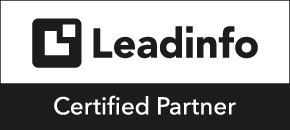How to write a website brief in 10 simple steps
Written by Lynsey Campbell
Whether you’re an in-house marketing manager, a freelancer or a CEO, writing a brief for your new site can be daunting.
But it doesn’t need to be.
Even if you don’t have the technical expertise or knowledge of industry jargon, simply getting your ideas down in a document that makes sense will ensure you get the best possible proposals for your project. Wondering what to include in a website brief can be worrying, but sticking to the structure below will help your project get off to a strong start.
We’re breaking down the key things we need to know to create a website proposal, so stick with these and you’ll be well on your way to creating the website you want.
1 – Who you are
Let’s start with an easy one. Who are you?
This will inform everything around your brief, agency proposals, and the finished product.
Think about:
- Who’ll be working on the project
- What you offer
- Your history
- Why you do what you do
- What makes you stand out
- Your values
- Your tone of voice
- Your customers
2 – Your current site
If you already have a site, it’s a good idea to cast your eyes over it and really consider why you’re looking for a change.
We don’t need a technical overview of everything, it might be something as simple as you’ve had a visual rebrand and nothing matches anymore. The loading time might be longer than you’d like, or you’ve changed direction in your business and need a new site to showcase updated services or products.
Or it may be that you don’t hate your current site, you just want an update!
Any information you can provide, be it good, bad or ugly, will help an agency shape a proposal best suited to your needs. Do any of the below points resonate with you?
- Loading speed
- Old brand
- Broken links
- Mobile-friendliness
- Old content
- Navigation problems
- Poor user experience
3 – Your users
Who are they, and what do they want to see?
It’s easy to get caught up with how you want your website to look and feel, but your users’ requirements should be at the top of your list.
Are they looking for information, looking to enquire, or looking to purchase?
Any information you can provide will allow a website designer to envision how your target audience will use your new site, and influence the creation process.
With key information on your users, multiple elements of your new site can be affected – we’re talking calls to action (CTAs), font choices and the all-important user journey.
Speak with your customers and get their feedback on your current site. Their likes and dislikes are crucial in the success of your new website, so hearing their thoughts at an early stage can make a world of difference.
4 – What’s the purpose of your website?
This is the big one, and probably the most important part of your brief.
This is when things get super interesting – do you need a simple brochure site? Is it an eCommerce platform to sell your products?
All websites serve a purpose and have an important place in your overall digital marketing strategy.
Your goals for your new site might include:
- Raising brand awareness
- Increasing informed leads
- Selling your products
- Capturing emails
- Creating a hub of information
- Improving SEO metrics
And those are just a few! You may have one main goal, or you may have multiple aims, but be sure to share these in your brief to ensure the best results for your project.
5 – Your competitors
It’s time for some analysis.
Who are your competitors, and what makes them successful?
Take time to do some research – visit their sites, note down which points you like or dislike, and detail where they sit in the marketplace in comparison to yourself.
This doesn’t mean you’re copying ideas. This will guide your project to ensure you can improve upon elements you may like, and avoid those you don’t.
You don’t necessarily need to limit this step to those in your industry. If you’ve stumbled across a site you love, that’s nothing to do with your marketplace, take note! It may be a banner style or a menu you like, but it’s all information that will help your agency create a website you love.
6 – Functionality and features
As you make your way through your brief, the answers to this question will likely already be mentioned, but take time to make sure nothing important is forgotten.
The goals you list in step no. 4 will influence this section. Selling your products online? You’ll need a store, payment integrations, and maybe even fulfilment software. Looking to increase lead generation? It might be time to look at a CRM.
Here are just a few of the most basic functionalities and content features we see every day:
- Basic pages (Home, About Us, etc)
- Contact page, forms or maps
- Our Team profiles
- Products / Online store
- News / Blog posts
- File downloads
- Video integration
- Social media integration
- Live chat
- Subdomains
- Accessibility requirements
7 – Content
We’re breaking this down into a few parts:
Site map – do you have a proposed site map in mind? What pages will you need?
Copy – are you happy to supply your own copy, do you need an entire copywriting service, or maybe just a copy audit?
Imagery – do you have a bank of photography to use, or will stock photos be required?
Brand – be sure to have your brand files ready, including logo, brand guidelines, and anything else you have to make sure your new site is fully on-brand.
8 – Your investment
Building a new site is like building a house – it could be a small, one-bed apartment, or a multi-million-pound mansion.
It all depends on the level of investment you can dedicate to the project.
It’s likely you’ll need to consider ongoing costs too – your domain and hosting require (normally) annual payments, so factor these into your overall budget.
If you’re not sure, the best thing to do is have a range in mind. Whether this means that your agency will decide it best to approach your project in phases or postpone some additional functionality until a later date, there’s always a solution.
9 – Marketing and maintenance
So you have a brand new website. What now?
Make sure to consider your overall digital marketing strategy – your site is only one part of this. Do you have a strong social media presence? Have you considered paid ads? Who’ll be updating your website when it’s live?
If you’re unsure of the answers to these questions, it’s maybe worth considering a maintenance agreement with your chosen agency. Whether it’s an hour or two for website support, or a couple of days to assist with your marketing, be sure to request this in your brief.
10 – Deadline
You may have a hard deadline that you can’t possibly miss.
Or you may have a rough idea, but you’d rather take the time required for the best possible outcome.
No matter the answer, be sure to share it in your brief.
This will make sure your agency can dedicate the resource needed to complete your project successfully.
If there are any key points you really want to hit home, be sure to reinstate them as you end your brief.
Your website brief is an important document that helps you define what you and your web designer will create.
With the information you’ve provided, you’ll then be equipping your chosen agency to provide a proposal that answers all your questions and get started on a new website that you love.
Got a proposal ready? Send it our way and we’ll be more than happy to take a look and help shape your next project.
Latest insights.
Stay connected with Scoot. Read the latest insights from our team on the industry, the studio and what we’re delivering for our clients.



